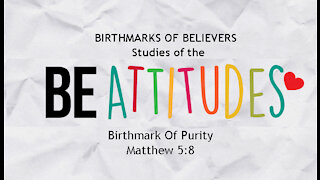Premium Only Content

Explanation of the Sunnah Part 3: The believers who lived among the Prophet
Among the reliable methods of finding, learning and following the most effective theology to connect self with Creator, is to build knowledge on evidence from primary sources. Assuming a piece of scripture is an original preserved and unchanged source (such as the Quran) then we can say this is a primary source of evidence for building knowledge of, and connection to, our Lord. First person testimony by a reliable witness of the coming of scriptural revelation upon a prophet might also be considered a primary source for theology study.
An example of a textual evidence which is not a primary source might be the Synoptic Gospels, the books known as Matthew, Mark, and Luke, which the majority of Christian scholars agree were not testimonials written by first person witnesses. Rather they were biographical constructs written from oral traditions by authors who did not witness the prophet 'Isa (Jesus, upon whom I invoke peace and blessings).
The testimony of the companions of the prophet Muhammad (upon whom I invoke peace and blessings) are known and corroborated by a rigorous science of narrative studies(a science which actually influenced the academic standards of citations to support an argument).
The study of Islamic theology, gaining knowledge of how to connect with our Creator, is reliable when it is build on the Qur'an and the hadith (narrative statements) of first person testimony of pious individuals who witnessed the revelation of scriptures. This means the Sunnah, must be learned according to the understanding of the Sahaba.
-
 3:56
3:56
Winnipeg Salafis
4 years agoExplanation of the Sunnah Part 6: Abandoning the Sunnah Leads to Innovation
19 -
 39:14
39:14
SunderedEarth
4 years agoAmong Us With Friends Part 2
27 -
 36:38
36:38
First Southern Baptist Church of Flagstaff
3 years agoBirthmark of Believers, Part 6: The Birthmark of Purity
74 -
 1:42:48
1:42:48
SunderedEarth
4 years agoAmong Us With Friends Part 1
31 -
 0:15
0:15
OptimusMine5
4 years agoConfusing among us players part 1
79 -
 9:58
9:58
shellbells
4 years ago $0.02 earnedAmong us among us
5942 -
 4:24
4:24
kencoach
3 years agoIntorversion Explanation & Description
23 -
 1:46
1:46
Reuters
3 years agoNavalny, WHO, Thunberg among Nobel nominees
2077 -
 1:11:38
1:11:38
Film Threat
14 hours agoCHRISTMAS DAY CHILL STREAM WITH CHRIS GORE | Hollywood on the Rocks
134K30 -
 14:22:40
14:22:40
The Quartering
1 day agoYule Log Christmas MAGA Edition With Memes! Come Hang Out!
224K29